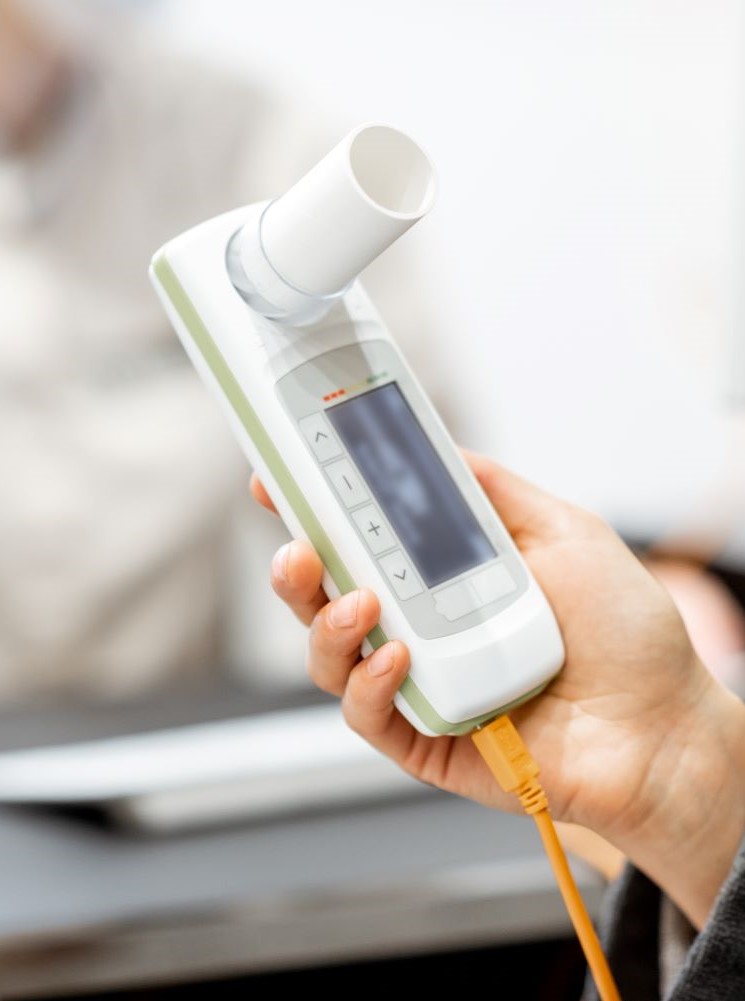Peptic Ulcer Disease (PUD)
The lifetime risk of developing Peptic Ulcer Disease ranges from 5% to 10%. For many, that’s a startling statistic.
Why are so many people at risk? How can you tell if you’re one of them? Peptic ulcer disease, a condition that affects the stomach’s inner lining, isn’t just about discomfort or pain.
Understanding its causes, risk factors, and the variety of ulcer treatment available can not only provide relief but also prevent its onset in the first place
How We Help
Peptic ulcer disease might be more common than many realize, but it’s not insurmountable. Empowering yourself with information is the first step to managing or preventing its onset. For those seeking an integrative approach to improving symptoms, prioritizing gut health is essential.
A team of experts, like those at Revolution GUT Health, can craft a tailored plan that melds advanced science with natural medicine. As part of the gut health revolution, don’t you deserve the best, comprehensive care for your gut?
To embark on a transformative journey for your health, request a consultation today.
Disclaimer: The health information on this site is provided for general informational and education purposes only and is not a substitute for professional advice. Accordingly, before taking any actions based upon such information, we encourage you to consult with the appropriate professionals. The use or reliance of any information contained on this site is solely at your own discretion. Revolution Gut Health does not claim to heal, treat or cure any of the conditions mentioned.
What Causes Peptic Ulcer Disease?
Peptic ulcer disease (PUD) can be traced back to various causes. While some causes are rampant and well-recognized, others lurk in the shadows, presenting challenges in diagnosis and treatment.
Common Causes
Helicobacter Pylori
Helicobacter pylori (H. pylori) is a type of bacteria found within the cells lining the stomach. Shockingly, 90% of duodenal ulcers and between 70% to 90% of gastric ulcers can be attributed to this tiny culprit.
An H. pylori infection is typically picked up during childhood, especially among individuals from lower socioeconomic statuses. This bacteria is not just a silent inhabitant. It possesses multiple tools to harm our body, known as virulence factors.
It produces an enzyme called urease that transforms urea into ammonia and neutralizes the stomach’s acid. Additionally, its toxins, mainly CagA and VacA, play a direct role in inflaming the stomach lining and causing tissue damage. To top it off, its flagella helps it move deeper into the stomach lining.
Nonsteroidal Anti-Inflammatory Drugs
Nonsteroidal anti-inflammatory drugs, or NSAIDs, are a close second to H. pylori when it comes to causing PUD. Our stomach is naturally armed with a protective layer of prostaglandin.
NSAIDs interfere with this defense mechanism by blocking prostaglandin production. This reduced protection leads to increased stomach acid, which can cause different types of ulcers.
Other Medications
Beyond NSAIDs, there are other medications that may put individuals at risk. These include: Corticosteroids, Bisphosphonates, Potassium chloride, Fluorouracil.
Lifestyle Factors
Lifestyle factors, like smoking, can also play a part, particularly in duodenal ulcers. The relationship isn’t straightforward, but it’s undeniable. Additionally, alcohol can be an irritant for the stomach and promote acid production.
Rare Causes
While the predominant causes of peptic ulcer disease are well-documented, there are lesser-known triggers that are equally important to consider. One such condition is Zollinger-Ellison Syndrome, a condition characterized by excessive acid production.
Other culprits include conditions that lead to a hypersecretory environment, such as:
- Systemic mastocytosis
- Cystic fibrosis
- Hyperparathyroidism
- Antral G cell hyperplasia

Risk Factors for Peptic Ulcer Disease
Disrupted Balance
Peptic ulcer disease stems from a delicate balance getting disrupted. Think of the stomach as a battleground. On one side, there are protective factors guarding the stomach lining. On the other side, destructive agents threaten it. When the destructive forces overpower the protective lining of the stomach, ulcers can form.
Medications and Family History
As mentioned, common culprits behind this disruption are the bacteria H. pylori and the use of NSAIDs. Your family history can also have a say in your risk. Your odds might be higher if a close family member has had peptic ulcer disease.
Ethnicity
Finally, belonging to certain ethnic groups, like African American or Hispanic, has been noted as potential ulcer risk factors.
Have A Question?
Contact our team for a FREE discovery call.
Not accepting new patients at this time
Symptoms of Peptic Ulcer Disease
A sharp or burning pain in the middle of your abdomen is a classic sign. This pain can sometimes strike at night, especially if you have a duodenal ulcer.
Some people feel like their stomach is always full or bloated, while others might notice they feel fuller faster than usual. Nausea can set in, sometimes even leading to vomiting. Changes in weight, either gaining or losing, might also hint at this condition.
More alarming symptoms include vomiting blood or noticing black, tarry stools. These are both signs of bleeding in the digestive system.
But some symptoms should set off immediate alarm bells. If you’re losing weight without trying, struggling to swallow, vomiting frequently, or having a family history of stomach-related cancers, it’s time to see a doctor. These could hint at more severe conditions or complications.

How Are Ulcers Diagnosed?
First off, your doctor will chat with you. They’ll ask questions to understand your symptoms and your health history.
If you mention feeling pain in the middle of your tummy, feeling full early into your meal, or perhaps a change in your weight, their ears will perk up. They’re especially on the lookout for pain that either gets worse or better after eating, depending on where the ulcer is located.
From there, they might do a physical check. They’ll feel your abdomen, maybe checking for any tenderness. Signs like paleness or fatigue might point to anemia, another clue.
But often, they’ll need a closer look.

Testing
An esophagogastroduodenoscopy, or EGD for short, is like a camera tour of your digestive system. This is the go-to test and is super accurate.
If you’re over 50 and you’re having new stomach troubles or have any alarming symptoms, this is likely to be recommended. Another option is a barium swallow, which is usually reserved when an EGD isn’t a good fit.
Now, remember that sneaky bacteria, H. pylori? There are tests to spot it. A breath test can detect a certain enzyme this bacteria makes.
Your doctor might also test your blood, stool, or even your urine. Sometimes, they might take a small sample from inside your stomach to look for this bacteria or rule out other problems.
Lastly, a CT scan can help, not so much to spot the ulcer, but to see if it caused other issues, like a hole in the stomach or a blockage.
Peptic Ulcer Disease Prevention
If the cause is H. pylori, addressing that infection is key to ulcer prevention. Steering clear of things that irritate your stomach, like alcohol and tobacco, is a big help.
And if you’re using pain relievers often, especially NSAIDs, it might be time for a chat with your doctor. There might be safer options or ways to protect your stomach.
Yet, even after successful treatment, ulcers can be like that annoying friend who keeps visiting. They might come back.
In fact, many people see their ulcers return. There’s also a small chance they could cause a serious issue, like a hole in the stomach.
But there’s good news. With the right care and some changes, many people with peptic ulcer disease can get back to their lives without the constant worry of a relapse.
Peptic Ulcer Disease Treatment
Proton Pump Inhibitors
Doctors often prescribe drugs that stop or slow down stomach acid production. Among these, proton pump inhibitors, or PPIs for short, are popular picks. They don’t just offer relief; they also promote healing.
If you’re on these drugs for a long time, your doctor might suggest calcium supplements. Why? Well, PPIs can, over time, increase the risk of breaking a bone.
Stopping or Adjusting Current Medications
Another common cause of ulcers is using NSAIDs, a type of painkiller, too often. The simple fix here might be stopping or trying a lower dose.
Other drugs, like corticosteroids or certain bone and blood medications, could also be causing trouble. There’s even a special drug, misoprostol, that can protect your stomach if you need NSAIDs.
Treating H. pylori
Now, if the H. pylori bacteria is the culprit, doctors have a combo move: two antibiotics and a PPI. Some common names in this mix are:
- Pantoprazole
- Clarithromycin
- Metronidazole
- Amoxicillin
They work together for about 7 to 14 days to kill the H. pylori bacteria. And if this doesn’t work, doctors might add in bismuth and shuffle the antibiotic lineup.
Yet, sometimes, ulcers can be stubborn. If an ulcer doesn’t shrink even after 8-12 weeks of strong medication, doctors call it ‘refractory’. Causes can vary, from the same old H. pylori to other serious issues like cancer.
Possible Complications
Peptic ulcers, if left unchecked, can throw some serious curveballs. One major worry is bleeding in the upper part of your digestive system, which can be pretty dangerous.
Another problem is gastric outlet obstruction. It’s like a roadblock, right where the stomach empties into the small intestine.
Things can get even trickier; the ulcer might eat through the stomach wall. Doctors call this a perforation. Or it might break into a neighboring organ, which is termed penetration.
Lastly, there’s a dark cloud that looms large: gastric cancer. A long-standing ulcer might increase the risk of stomach cancer. So, it’s clear: catching and treating an ulcer early can sidestep a world of complications.
Unlock a healthier you today!
Take the first step towards a happier, healthier life with our FREE discovery call.
Not accepting new patients at this time